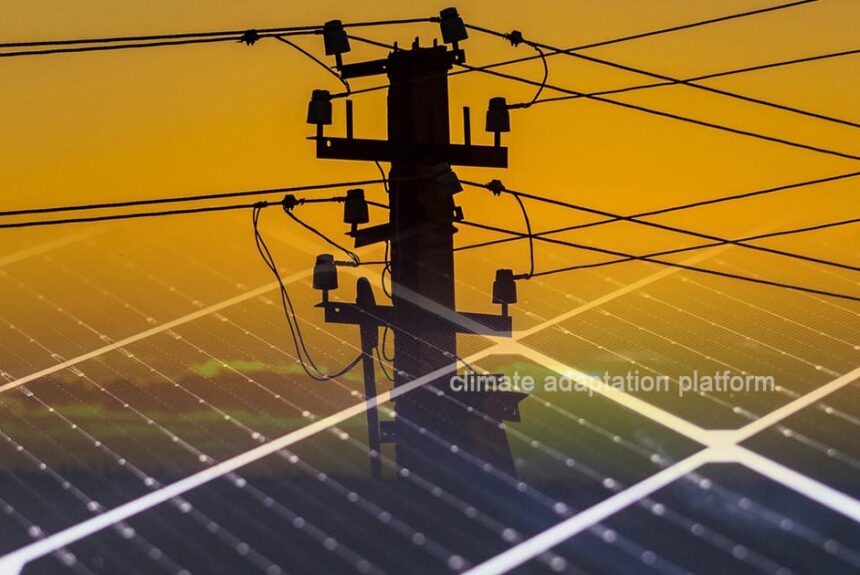The United Nations believes access to clean and affordable energy is key to developing agriculture, business, communications, education, healthcare, and transportation. Almost all life activities today depend on reliable and affordable electricity.
Yet, fossil fuel consumption contributes to climate change and is responsible for more than half of the total GHG emissions. To achieve universal access to affordable electricity by 2030, we must invest in clean energy sources like solar and wind.
Although the world is progressing towards sustainable energy targets, the pace must increase. Renewable sources now account for 30% of the share in the electricity sector but still lag in the heating and transport sectors.
Bangladesh has seen a growth in its installed power generation capacity in the last two decades. In 2000, only 20% of its population had access to electricity, but this figure has grown close to 97% by 2020, achieving the Government of Bangladesh’s (GoB) Vision Statement from February 2000.
According to the International Trade Administration, Bangladesh has made notable strides in expanding its renewable energy capacity over the past two decades, yet there remains ample room for further development. As of 2024, renewable energy constitutes only 4.5% of the nation’s total installed power capacity of 22,215 MW, with solar power making up 80% of the 1,183 MW in total renewable capacity.
Most electricity generation still relies on fossil fuels, with natural gas accounting for over 50% of this energy mix. The government has established ambitious goals to increase the share of renewable energy to 15% by 2030, 40% by 2041, and ultimately 100% by 2050. Achieving these targets will necessitate substantial investments and a rapid rollout of renewable energy technologies.
The Economic Times reports that in 2024, Bangladesh faced a reduced power supply problem when its Indian utility provider, Adani, slashed its electricity supply to Bangladesh by over 60% due to alleged unpaid bills of approximately US$850 million. The situation highlights Bangladesh’s vulnerability when it relies on neighbouring countries for electricity.
Investing in renewable energy allows Bangladesh to be energy resilient and generate electricity from renewable and clean sources.
According to Energy Tracker in Asia, there is great potential for solar energy in Bangladesh, and the country is committed to increasing it. Bangladesh’s population of over 170 million is growing at 1% annually, and the energy demand is rising by an average of nearly 5% annually.
Solar capacity in Bangladesh
Bangladesh’s government offers a RERED program to expand solar electrification in rural areas. The program successfully covers 12% of its rural population, adding 45MW of solar capacity to the country’s grid in 2021.
Additionally, Bangladesh has small-scale solar farms that produce electricity for 4 million households and 21 independent solar mini-grids that contain 1,000 solar irrigation pumps the government provides to agricultural workers.
The country’s largest solar power plant is the Rays Power Infra 275-MW capacity solar plant in Sundarganj, Gaibandha, completed in January 2023. The power plant is also connected to the national grid. Rays Power Infra has 1.3 GW of solar energy capacity with plans to expand the capacity up to 2.0 GW in the next two years.
To help Bangladesh reach its renewable energy potential, the Asian Development Bank loaned a $24.3 million financing package with Muktagacha Solartech Energy Limited (MSEL), owned by a Bangladesh-based energy company, to establish a grid-connected solar photovoltaic power plant in Mymensingh, Bangladesh. The company is the country’s first privately owned solar facility to secure international funding.
The project will build and operate a 20-megawatt (MW) grid-connected solar photovoltaic power plant to generate 37.9 gigawatt-hours of electricity annually and avoid 18,344 tons of carbon dioxide emissions annually.
“ADB’s financing aims to drive progress and advance sustainable energy solutions in Bangladesh. The long-term financing will help promote private sector involvement in developing renewable energy in the country while addressing the critical capital needs of renewable projects,” said ADB Director General for Private Sector Operations Suzanne Gaboury.
Investing in solar energy will strengthen Bangladesh’s energy resilience and support its growing capacity requirements from its population and economic growth needs. Solar energy can potentially lead the country’s decarbonisation efforts, and it helps renewable energy become more cost-effective.
Sources:
Affordable and Clean Energy. (n.d.). Sustainable Development Goals. Retrieved from https://www.un.org/sustainabledevelopment/energy/
Bangladesh Renewable Energy Sector Opportunities. (2024, November 12). International Trade Administration. Retrieved from https://www.trade.gov/market-intelligence/bangladesh-renewable-energy-sector-opportunities
Koons, E. (2024, June 9). Solar Energy In Bangladesh: Current Status and Future. Energy Tracker Asia. Retrieved from https://energytracker.asia/solar-energy-in-bangladesh-current-status-and-future/
Energy system of Bangladesh. (2022). EIA50. Retrieved from https://www.iea.org/countries/bangladesh
Adani Power cuts Bangladesh supply by over 60% on payment dispute. (2024, November 8). The Economic Times. Retrieved from https://economictimes.indiatimes.com/industry/energy/power/adani-power-cuts-bangladesh-supply-by-over-60-on-payment-dispute/articleshow/115080915.cms
ADB, MSEL Sign Deal to Establish 20-MW Solar Power Plant in Bangladesh. (2024, December 2). ADB. Retrieved from https://www.adb.org/news/adb-msel-sign-deal-establish-20-mw-solar-power-plant-bangladesh



Leave a Reply